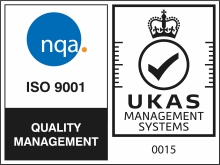
Who is responsible for health and safety in the workplace
As an employer, you know how important it is to keep your employees safe at work – and the potential costs and consequences if you fail in your duty of care.
You have a responsibility in law for health and safety in your workplace, but the responsibility doesn’t rest with you alone.
Nick Grinnell explains…
Why is health and safety important in the workplace?
Every year, hundreds of thousands of people in the UK are injured at their place of work, and more than 100 people are killed.
Many more go on to develop a debilitating musculoskeletal disorder, or suffer from work-related conditions such as stress, depression and anxiety.
The only way to guard against these avoidable injuries, illnesses and deaths is for businesses to invest in continually championing the health, safety and wellbeing of their employees.
What are an employer’s health and safety responsibilities?
Under health and safety law in the UK, employers are responsible for managing health and safety risks in their business. They have a duty to protect the health, safety and welfare of their employees and anyone else that may be affected by their work activities, and must do whatever is reasonably practicable to achieve this.
In practice, this entails:
Assessing risks in the workplace, identifying activities that could cause injury or illness and taking action to either eliminate the hazard or control the risk.
- Providing information about risks to their employees, and details of what they can do to protect themselves and others around them.
- Consulting employees on health and safety issues, either directly or through a safety representative elected democratically or appointed by a trade union.
Who is responsible for health and safety in the workplace?
Everyone in your organisation has a responsibility to do everything they can to keep themselves and others around them safe.
Individual employees, team leaders, site managers and company leaders will all have different roles to play depending on the specifics of their job and their level of organisational influence.
For example, these might include:
Employees – identifying and resolving common safety hazards following a ‘see it, sort it’ mentality, wearing appropriate PPE at all times, complying with safety protocols.
- Team leaders – attending safety meetings, briefing their teams on safety initiatives and targets, checking team member training is up-to-date, ensuring team members comply with safety rules, providing relevant feedback to the dedicated health and safety lead.
- Company leadership – leading from the front on compliance and safety, installing safety as a core tenet of and strategic priority for the business, setting expectations and targets for safety improvements, communicating progress towards safety targets, rewarding success in the pursuit of a safer workplace, empowering team leaders to make a difference in their individual areas.
Appointing a dedicated health and safety representative does not absolve an employer of its responsibilities under health and safety law. While this person may be responsible for co-ordinating activity, and provide a vital link between individuals, teams and company leaders, you as the employer retain overall responsibility, and everyone in your organisation must work together to keep you all safe, happy and healthy at work.

















